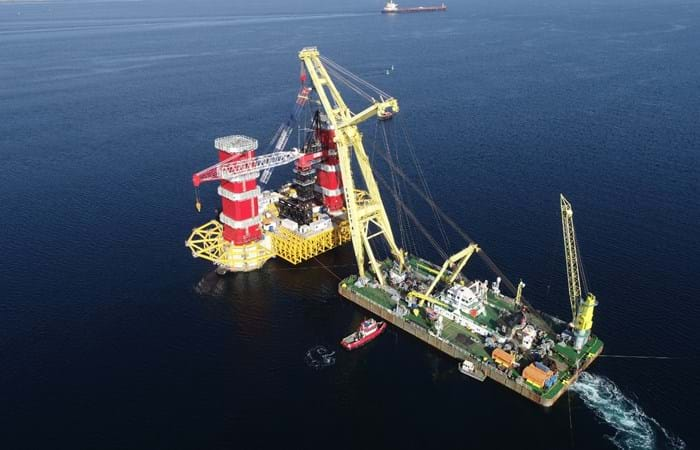The 1915 Çanakkale Bridge, also known as the Çanakkale Strait Bridge, is a proposed suspension bridge being constructed in the Çanakkale area in Turkey. Situated just south of the towns of Lapseki in Asia and Sütlüce Village in Europe. The bridge will span the Dardanelles strait, about 10 km south of the Sea of Marmara.
The bridge is the centerpiece of the 324 km long Kınalı-Balıkesir Motorway, which will connect the O-3 and O-7 motorways in East Thrace to the O-5 motorway in Anatolia. With a main span of 2,023 m, the bridge will become the longest suspension bridge in the world.
The total length of the bridge will be 3,563 m and together the approach viaducts the length reaches 4,608 m. The total height of the bridge’s two towers will be 318 m tall. The deck of the bridge will be at 72.8 m hight and have a total width of 45.06 m and a maximum thickness of 3.5 m. The deck will carry six lanes (three in each direction) of motorway, together with two walkways on each side for maintenance.
On January 26, 2017, a Joint-Venture SK Engineering & Construction Co., Daelim Industrial Co., Limak Insaat Sanayi ve Ticaret AS and Yapi Merkezi Insaat Sanayi ve Ticaret AS was appointed as contractor for the construction of the bridge.
On March 18, 2017, the groundbreaking ceremony was held, marking the commencement of the construction works. Construction activities are underway and scheduled to be completed by March 2022.
Boskalis Offshore Marine Services was contracted to execute a part of the lifting operations ,a float-over scope to install the tie-beam and deliver a part of the vessels for transport and installation of the foundation caissons.
